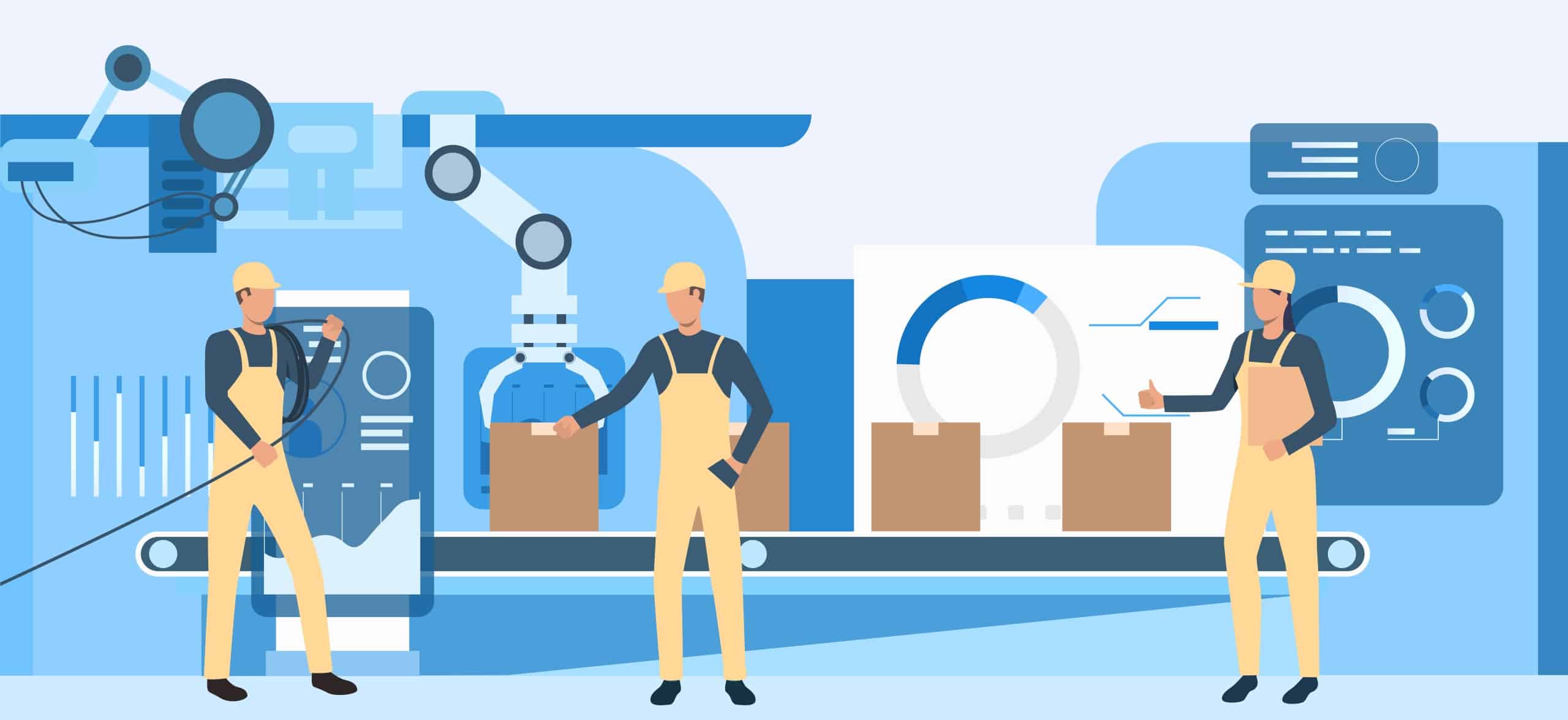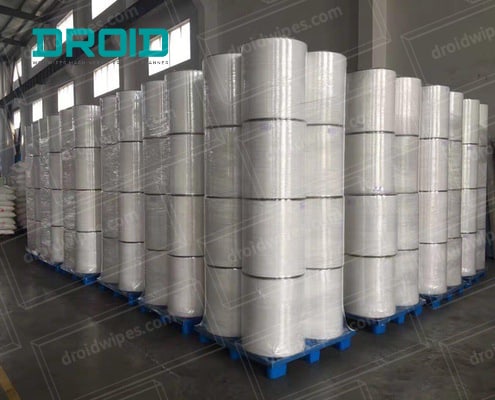Water Usage in Wet Wipes Production
Water plays a crucial role in the creation of wet wipes, being widely used at different stages of the wet wipes manufacturing process. The voyage starts with the acquisition and treatment of primary resources, necessitating significant quantities of water. Wet wipes primarily use nonwoven fabrics, which are often composed of a combination of natural and synthetic fibers. The manufacturing process of these textiles, particularly those that use natural fibers such as cotton, requires a significant amount of water. Furthermore, the use of chemicals in wet wipes for cleaning, moisturizing, and preservation reasons requires a substantial amount of water during the wet wipes manufacturing process.
The wet wipes manufacturing process itself is a significant water user. Water is the primary solvent used in the formulation of cleaning and moisturizing solutions that are applied to the wipes. Subsequently, the nonwoven fabric is impregnated with this solution, which requires meticulous regulation to guarantee uniformity and excellence of the result. Even little variations in water consumption may have a significant impact on the efficiency and usability of the wipes, highlighting the importance of water management in the production process.
Moreover, water consumption also includes the packaging phase of wet wipes manufacturing. To maintain cleanliness and safety, the packaging procedure often includes the washing and sterilization of both the wipes and the packing materials. While essential, this cleaning procedure contributes to the total water use in the manufacturing of wet wipes. Optimizing resource consumption and minimizing waste is crucial at this stage, making efficient water usage critical.
Due to the significant water requirements in the manufacturing of wet wipes, wet wipes manufacturers must investigate and use water-conservation methods. Implementing water-efficient technology, such as closed-loop water systems that recycle and reuse water throughout the production process, may greatly decrease water waste. Choosing sustainable sources for raw materials, such as substituting bamboo or organic cotton for non-biodegradable options, may reduce the amount of water used in production. In addition, developing concentrated or waterless cleaning solutions might reduce the necessary water quantity without affecting the quality of the product.
To summarize, water is essential in the creation of wet wipes, but its excessive use poses substantial environmental difficulties. Wet wipes manufacturers may decrease their water use by adopting new and sustainable methods, therefore supporting environmental preservation and advancing a more sustainable sector. This strategy not only has positive effects on the environment but also improves the long-term sustainability and profitability of wet wipes manufacturing.
Strategies to Reduce Water Usage in Wet Wipes Manufacturing
Minimizing water use in the manufacturing of wet wipes is advantageous not only for environmental preservation but also for enhancing cost-effectiveness. Here are some innovative strategies to achieve this goal:
Adopting Water-Efficient Technologies
Implementing water-efficient technology is a crucial approach to decreasing water consumption in the wet wipes manufacturing sector. One very effective method is the use of closed-loop water systems. These systems are specifically engineered to recycle and repurpose water within the industrial process, hence greatly reducing the need for new water. Closed-loop systems effectively mitigate water usage and wastewater creation by treating and recirculating water, therefore concurrently addressing two environmental challenges. This technique guarantees the effective and sustainable use of water, resulting in significant water conservation and a reduced environmental impact.
Another emerging technology that is becoming more popular is the use of contemporary manufacturing methods, such as hydroentangling. Hydroentangling, also known as spunlacing, is a technique that uses powerful water jets to interlock fibers, resulting in the formation of a robust and long-lasting nonwoven fabric, eliminating the need for chemical adhesives. This process is more water-efficient than previous procedures and yields a high-quality product. Moreover, the water used in hydroentangling may often be purified and recycled, hence augmenting the water-conserving advantages of this method. Wet wipes manufacturers may make wet wipes of superior quality and greatly decrease their water use by using these cutting-edge production techniques.
Smart water management systems are essential for optimizing water consumption. These systems use sensors and automation to oversee water consumption throughout the manufacturing process, detecting locations where water usage may be minimized. Smart water management solutions provide factories with up-to-date data and valuable insights, enabling them to make well-informed choices about water consumption, swiftly execute remedial actions, and consistently improve their water efficiency. This technological method not only saves water but also improves operational efficiency and cost-effectiveness.
Moreover, adopting sustainable water treatment technology may actively support water conservation initiatives. Advanced water treatment techniques, including membrane filtration, reverse osmosis, and ultraviolet (UV) disinfection, are very successful in purifying and treating water for reuse in the industrial process. These methods guarantee that water satisfies the necessary quality criteria for manufacturing, hence decreasing reliance on freshwater sources. Wet wipes manufacturers may achieve a closed-loop system that optimizes water reuse and reduces environmental impact by investing in sustainable water treatment systems.
Ultimately, it is crucial for the wet wipes manufacturing business to embrace water-efficient technology to decrease its water use and improve its overall sustainability. Essential elements of a complete water conservation plan include closed-loop water systems, sophisticated manufacturing processes such as hydroentangling, smart water management systems, and sustainable water treatment technologies. By using these technologies, manufacturers may greatly cut water use, minimize the production of wastewater, and contribute to environmental preservation, all while maintaining high standards of product quality and operating efficiency.
Sustainable Raw Materials:
The selection of wet wipes raw materials is a critical factor in determining the sustainability of wet wipes manufacturing. Historically, wet wipes have been composed of a mixture of natural and synthetic fibers, with cotton being a prevalent natural fabric used. Nevertheless, the process of growing cotton is recognized for its high need for water, which greatly adds to the water footprint of wet wipes. To tackle this problem, wet wipes manufacturers are progressively shifting towards sustainable raw materials that use less water and have a reduced environmental footprint.
Bamboo is a very promising alternative because of its fast growth and minimum water requirements, in contrast to classic crops such as cotton. Bamboo may flourish without the use of pesticides or fertilizers, so further minimizing its environmental impact. Moreover, bamboo fibers include inherent biodegradability, making them a superb option for environmentally conscious wet wipes. Wet wipes manufacturers may achieve a substantial reduction in water use and environmental effects by transitioning to bamboo, resulting in the production of superior, eco-friendly wet wipes.
Another viable alternative is the use of organic cotton, which is cultivated using agricultural methods that prioritize soil fertility and water preservation. Organic cotton growing eschews the use of artificial pesticides and fertilizers, opting instead for natural methods to sustain the health and productivity of the crops. This method not only decreases water use but also limits the discharge of toxic substances into the environment. While organic cotton production still necessitates water use, it has a reduced ecological footprint when compared to traditional cotton growing methods.
Wet wipes manufacturers are also investigating alternative biodegradable and sustainable materials, including lyocell and other cellulose-based fibers, in addition to bamboo and organic cotton. Lyocell, for instance, is obtained from responsibly obtained wood pulp and manufactured using an eco-friendly method that employs harmless solvents. Lyocell manufacture is more water-efficient compared to the production of conventional fibers, and the substance is biodegradable, making it an environmentally friendly option for wet wipes. By integrating novel materials, businesses may improve the sustainability of their goods while satisfying customer demand for environmentally beneficial choices.
Additionally, the use of recycled materials is a viable approach to enhance sustainability in the manufacturing of wet wipes. Recycled polyester may be used to produce resilient and high-performing nonwoven materials specifically designed for wet wipes. Through the use of recycled fibers, wet wipes manufacturers can diminish the need for new materials, preserve natural resources, and lower water and energy usage linked to the manufacturing of raw materials. This method not only promotes a circular economy but also conforms to sustainability objectives by reducing environmental harm.
Ultimately, the transition to using sustainable raw materials in the manufacturing of wet wipes is crucial to decrease water use and foster environmental accountability. Bamboo, organic cotton, lyocell, and recycled materials provide feasible substitutes for conventional fibers, with each contributing to a manufacturing process that is more environmentally friendly. Wet wipes manufacturers may create environmentally friendly wet wipes by adopting these materials, which not only satisfy customer demands for sustainability but also greatly reduce their water use and overall ecological consequences. The shift towards sustainable wet wipes raw materials not only has positive implications for the environment but also establishes wet wipes manufacturers as frontrunners in the expanding market for environmentally-friendly and socially conscious goods.
Optimizing Solution Formulations:
Optimizing the compositions of the solutions used in wet wipes is a crucial tactic for minimizing water usage throughout the wet wipes manufacturing process. Conventional wet wipes are soaked with solutions that often include a substantial amount of water as a solvent for different cleaning, moisturizing, and preserving substances. Through the process of reevaluating and enhancing these formulas, wet wipes manufacturers can substantially reduce the quantity of water needed, therefore encouraging the adoption of more environmentally friendly production methods.
An efficient strategy involves the creation and use of highly concentrated solutions. Concentrated formulations consist of larger quantities of active chemicals and need a smaller quantity of water for dilution. Wet wipes manufacturers may get the needed effectiveness by using these concentrated solutions, while significantly reducing the amount of water required. This not only decreases the amount of water required at the step of preparing the solution but also lowers the entire water footprint of the manufacturing process. Concentrated solutions provide significant benefits in terms of decreasing transportation and storage expenses since they allow for smaller amounts of concentrated product to replace greater volumes of diluted solutions.
Another notable advancement is the development of cleaning chemicals and gels that do not need water. These products may provide equivalent cleansing and hydrating advantages without using water as a solvent. Waterless hand sanitizers have gained significant popularity and proven effectiveness, indicating that comparable methods may be used for wet wipes. Waterless wipes might be composed of alcohol-based solutions, natural oils, or other active components that do not need water. This transition not only saves water but also creates opportunities for smaller and lighter packaging, therefore decreasing the environmental consequences of transportation and storage.
Optimizing the composition of the solution, along with lowering its water content, may also help sustainability. Wet wipes manufacturers may guarantee the effectiveness and environmental safety of the wipes by opting for biodegradable and eco-friendly materials. Plant-based extracts and essential oils, which are natural and organic, may effectively clean and moisturize without the use of synthetic chemicals that may demand large amounts of water during their manufacturing process. This strategy is in line with the increasing customer desire for environmentally friendly and sustainable goods.
In addition, wet wipes manufacturers can use sophisticated technologies to enhance the efficiency of the solution application process. Precision dosing systems provide the ability to precisely regulate the quantity of solution supplied to each wipe, guaranteeing consistent saturation and reducing unnecessary consumption. Through accurate measurement and exact application, these systems contribute to waste reduction and improve the efficiency of water use in the wet wipes manufacturing process. This technical innovation guarantees that every wipe has the precise quantity of solution required for its specific job, hence minimizing wasteful water use.
Engaging in partnerships with suppliers and research institutes may also stimulate innovation in enhancing the effectiveness of solution formulations. Wet wipes manufacturers may minimize water use by participating in research and development collaborations to investigate novel components, formulation processes, and application methods. These partnerships may result in the identification of innovative solutions that improve the sustainability of wet wipes while maintaining their function and quality.
Ultimately, enhancing the formulation of solutions is a crucial measure in minimizing water use during the manufacturing of wet wipes. Concentrated solutions, waterless cleaning agents, and the incorporation of biodegradable chemicals all help the implementation of more sustainable production processes. The use of advanced application technologies and the implementation of joint research activities significantly increase the capacity for water conservation. Wet wipes manufacturers may achieve high-quality and effective wet wipes while reducing their environmental impact and promoting larger sustainability objectives by prioritizing these optimization measures.
Efficient Packaging Practices:
Effective packing methods are essential for minimizing water use and improving the overall sustainability of wet wipes manufacturing. Conventional packing techniques can need significant quantities of water, especially during the cleaning and sterilizing phases. Wet wipes manufacturers may greatly reduce water use, limit waste, and produce environmentally friendly goods that align with customer desire for sustainability by using creative and effective packing methods.
One of the most significant shifts is the transition towards simple packaging. Minimizing the quantity of packing material not only saves resources but also reduces the need for intensive cleaning and sterilizing. Minimalist package designs use less amount of materials, resulting in decreased water usage for processing and maintaining sanitary requirements. In addition, wet wipes manufacturers may enhance the wet wipes manufacturing processes by streamlining packaging, resulting in increased water efficiency and cost-effectiveness. This strategy also corresponds to customer desires for items that generate less packaging waste, hence increasing the attractiveness of the brand.
Another efficient approach is using sustainable packaging materials. Materials that provide enhanced cleanability and serializability, requiring low water use, may make a substantial contribution to water conservation efforts. Biodegradable and compostable materials may be processed using more water-efficient processes than standard plastics, for example. Additionally, these materials have the advantage of mitigating environmental contamination and promoting a circular economy. Wet wipes manufacturers may decrease their water use and support environmentally friendly methods by investing in sustainable packaging materials.
Utilizing advanced sterilizing methods may significantly improve the efficiency of packing. Ultraviolet (UV) light sterilization and dry heat sterilization are excellent methods for disinfecting packing materials without requiring significant amounts of water. These technologies provide dependable hygiene requirements while also saving water, making them well-suited for sustainable wet wipes manufacturing. By incorporating these technologies into the packaging process, it guarantees the safety and cleanliness of goods, while also decreasing the need for water-based cleaning procedures.
Integrating intelligent packaging solutions may help enhance water efficiency. Advanced packaging technologies, such as sensors and indicators, can effectively monitor the quality and freshness of wet wipes, hence minimizing the need for unnecessary sterilization and cleaning. These technologies may notify producers and customers of any breaches or contamination, guaranteeing product safety while using a small amount of water. Through the use of intelligent packaging solutions, wet wipes manufacturers may improve the functioning and sustainability of their goods, while offering additional benefits to customers.
In addition, effective packing methods also apply to the transportation and storage of wet wipes. Wet wipes manufacturers may mitigate the environmental consequences of shipment and storage by creating packaging that maximizes space use and minimizes bulk. Utilizing compact and effective packaging minimizes the need for extra protective materials and lowers fuel consumption during transit. This practice not only helps to save water but also reduces the total carbon emissions associated with the product, so contributing to a more sustainable supply chain.
Engaging in collaborative endeavors with suppliers and industry partners may ultimately stimulate innovation in packaging methods. Through collaboration, wet wipes manufacturers may collectively investigate novel materials, technologies, and methodologies that improve both the effectiveness and eco-friendliness of packaging. Collaborative endeavors may result in the establishment of industry norms and optimal methods that are advantageous for the whole sector, facilitating the general acceptance of packaging solutions that save water.
To summarize, using effective packing methods is crucial for minimizing water use in the manufacturing of wet wipes. Minimalist packaging, sustainable materials, enhanced sterilizing methods, smart packaging solutions, and optimal transportation and storage all enhance the sustainability of production operations. Wet wipes manufacturers may reduce their water footprint and satisfy customer expectations for sustainability by adopting these measures. The comprehensive strategy towards optimizing packaging not only has positive effects on the environment but also improves brand image and contributes to sustained commercial prosperity.






